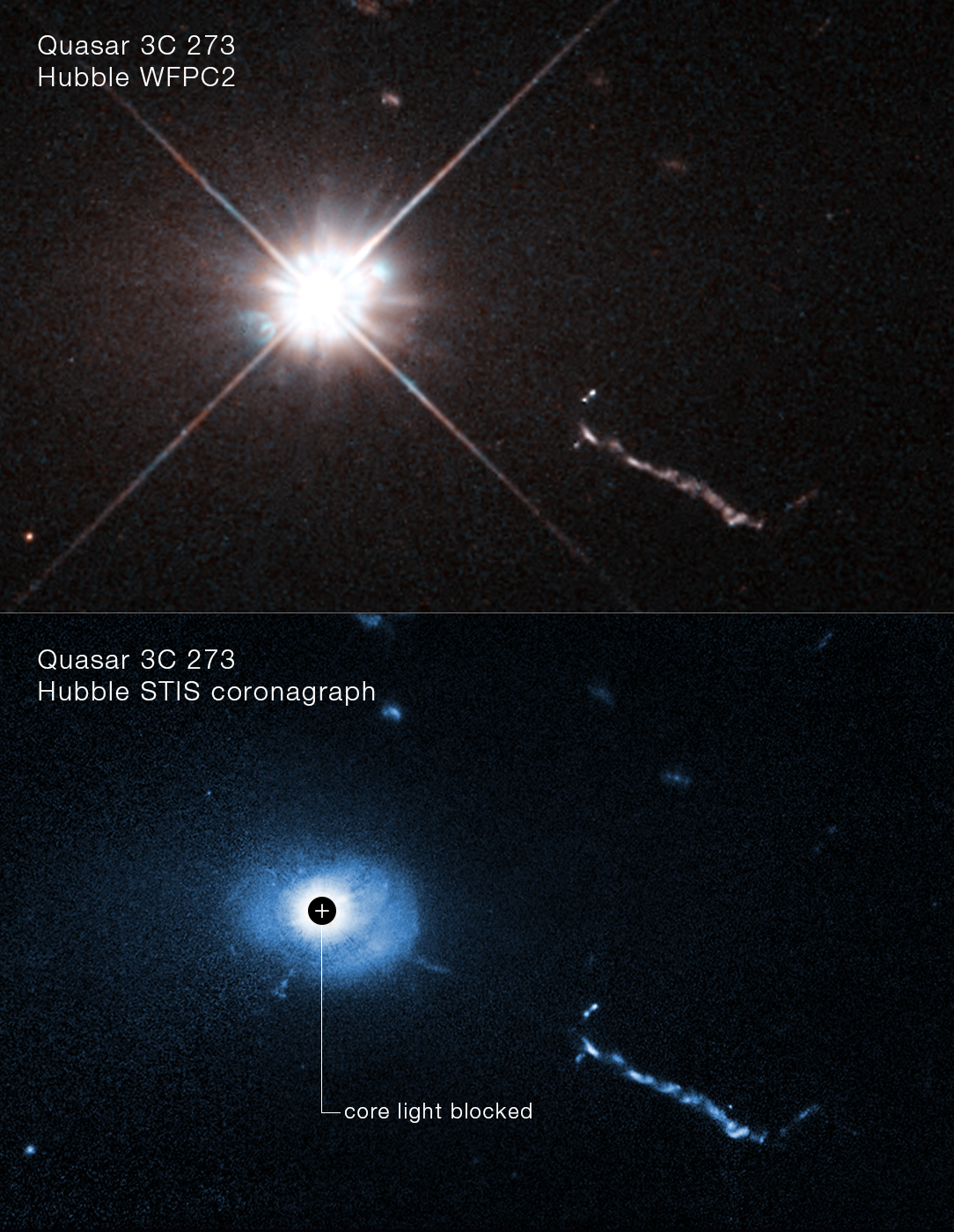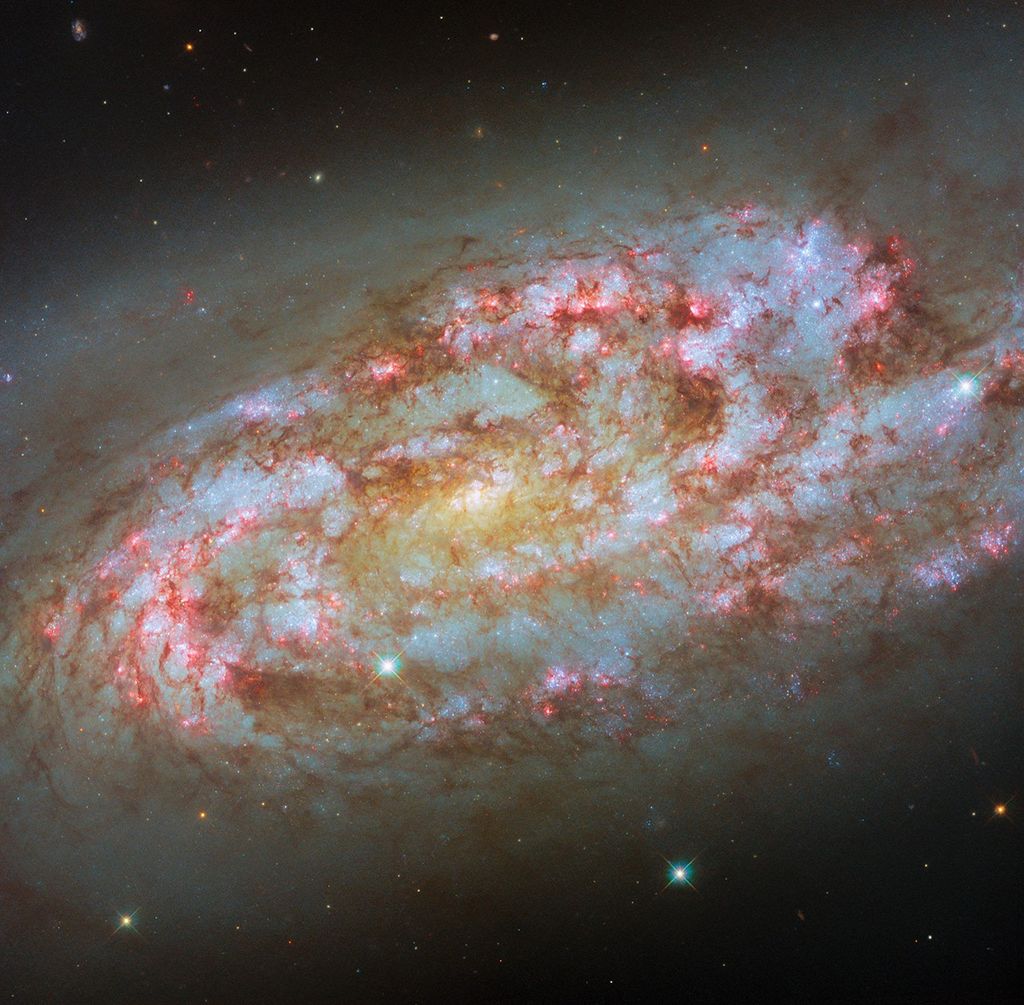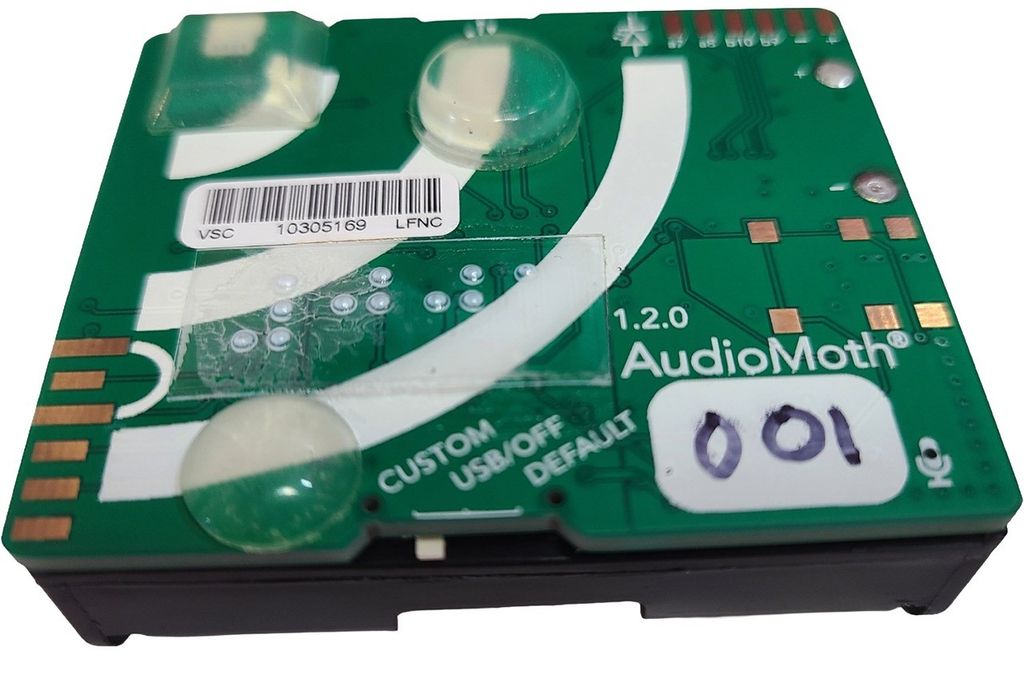
Annotated Hubble Images of Quasar 3C 273
A Hubble Space Telescope image of the core of quasar 3C 273. A coronagraph on Hubble blocks out the glare coming from the supermassive black hole at the heart of the quasar. This allows astronomers to see unprecedented details near the black hole such as weird filaments, lobes, and a mysterious L-shaped structure, probably caused by small galaxies being devoured by the black hole. Located 2.5 billion light-years away, 3C 273 is the first quasar (quasi-stellar object) ever discovered, in 1963.
Image Credit: NASA, ESA, Bin Ren (Université Côte d’Azur/CNRS); Acknowledgment: John Bahcall (IAS); Image Processing: Joseph DePasquale (STScI)
- X
https://science.nasa.gov/image-detail/amf-63ebbcaa-6762-47b7-90e2-65142c00d28b/
Image CreditNASA, ESA, Bin Ren (Université Côte d’Azur/CNRS); Acknowledgment: John Bahcall (IAS); Image Processing: Joseph DePasquale (STScI)
Size1084x1400px





















